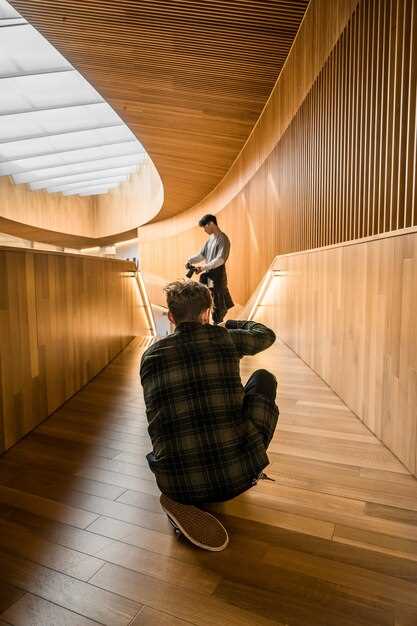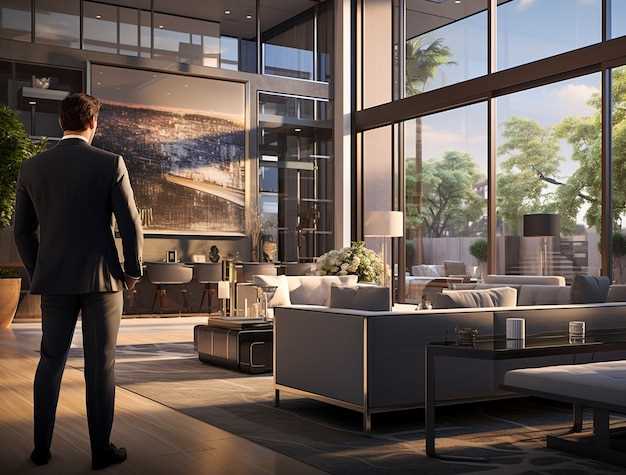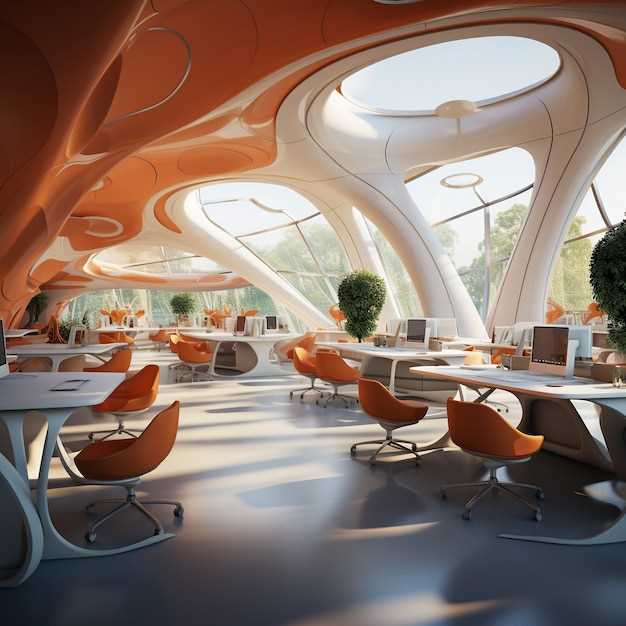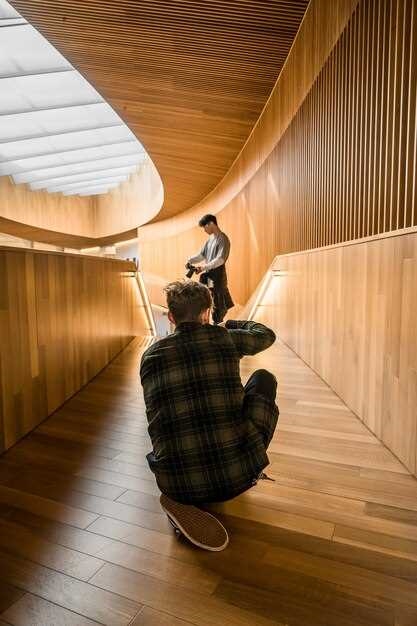
As the world of travel continues to evolve, so too does the design of hotels and resorts. The way we experience these spaces has a profound impact on our overall travel experience, and designers are constantly seeking innovative ways to create inviting and memorable environments for today’s discerning travelers.
From the moment guests step foot into a hotel, they are greeted by a carefully curated atmosphere that sets the tone for their stay. The design elements, such as lighting, color palette, and furniture choices, all work together to create a sense of warmth and comfort. The use of natural materials, such as wood and stone, adds a touch of authenticity and helps to establish a connection with the surrounding environment.
One of the key trends in hotel design is the incorporation of local culture and heritage. Hotels are increasingly embracing the unique characteristics of their location, whether it be through artwork, traditional craftsmanship, or locally sourced materials. This not only adds a sense of place, but also allows guests to immerse themselves in the local culture, creating a more enriching and authentic experience.
Incorporating Biophilic Design Elements for a Connection with Nature
Embracing the essence of nature within hotel spaces has become a prominent trend in contemporary design. By incorporating biophilic design elements, hotels can create a harmonious connection with the natural world, providing guests with a serene and rejuvenating experience.
Bringing the Outdoors In
One way to incorporate biophilic design is by bringing the outdoors inside. This can be achieved through the use of large windows that offer panoramic views of the surrounding landscape, allowing natural light to flood the space. Additionally, the strategic placement of indoor plants and living walls can create a sense of tranquility and improve air quality.
Natural Materials and Textures

Another key aspect of biophilic design is the use of natural materials and textures. Incorporating elements such as wood, stone, and bamboo can add warmth and authenticity to the hotel’s interior. Textures inspired by nature, such as woven fabrics or textured wallpapers, can also create a tactile connection with the natural world.
- Utilize reclaimed wood for flooring and furniture to promote sustainability.
- Integrate stone accents in the lobby or common areas to evoke a sense of grounding.
- Choose fabrics with organic patterns or motifs that mimic the beauty of flora and fauna.
By incorporating these natural elements, hotels can create a sense of harmony and balance, allowing guests to feel more connected to their surroundings.
Overall, incorporating biophilic design elements in hotel architecture and interior design offers a unique opportunity to create inviting spaces that foster a deep connection with nature. By bringing the outdoors in and utilizing natural materials and textures, hotels can provide guests with a serene and rejuvenating experience, enhancing their overall stay and well-being.
Embracing Minimalism and Simplicity for a Calming Atmosphere
In today’s fast-paced world, travelers seek a refuge that offers a sense of tranquility and relaxation. One way to achieve this is through the use of minimalism and simplicity in hotel architecture and interior design. By embracing these principles, hotels can create a calming atmosphere that allows guests to unwind and rejuvenate.
Creating a Sense of Space
Minimalism in hotel design focuses on creating a sense of space and openness. By eliminating clutter and unnecessary elements, hotels can provide guests with a visually appealing environment that promotes a feeling of serenity. Clean lines, neutral colors, and uncluttered spaces contribute to a sense of calmness and allow guests to focus on their well-being.
Utilizing Natural Elements
Simplicity in hotel design involves incorporating natural elements to enhance the overall ambiance. The use of materials such as wood, stone, and natural fibers creates a connection to nature and brings a sense of warmth and tranquility to the space. By incorporating these elements, hotels can create a soothing environment that promotes relaxation and rejuvenation.
- Integrating large windows that allow natural light to flood the space, creating a bright and airy atmosphere.
- Using plants and greenery to bring nature indoors and improve air quality.
- Incorporating water features such as fountains or indoor pools to create a sense of calmness and serenity.
By embracing minimalism and simplicity in hotel architecture and interior design, hotels can create inviting spaces that cater to the needs of today’s travelers. These design principles promote a calming atmosphere that allows guests to escape the stresses of everyday life and find solace in their surroundings. Whether it’s a minimalist room with clean lines and neutral colors or a simple lobby with natural elements, these design trends offer a sanctuary for travelers seeking a peaceful and rejuvenating experience.
Utilizing Sustainable Materials and Green Building Practices
In this section, we will explore the importance of incorporating sustainable materials and green building practices in hotel architecture and interior design. By embracing environmentally friendly approaches, hotels can create spaces that not only cater to the needs of today’s travelers but also contribute to a more sustainable future.
1. Embracing Sustainable Materials
One key aspect of sustainable hotel design is the use of eco-friendly materials. Instead of relying solely on traditional materials that may have a negative impact on the environment, designers are now exploring alternative options. These materials include recycled or reclaimed wood, bamboo, cork, and other renewable resources. By incorporating these sustainable materials, hotels can reduce their carbon footprint and promote a more responsible approach to construction and design.
2. Implementing Green Building Practices
Green building practices involve the integration of energy-efficient systems and technologies into hotel design. This includes the use of solar panels to generate electricity, the installation of energy-efficient lighting and HVAC systems, and the incorporation of water-saving fixtures. By implementing these practices, hotels can significantly reduce their energy consumption and minimize their impact on the environment.
- Utilizing natural lighting and ventilation to reduce the need for artificial lighting and air conditioning.
- Implementing a comprehensive recycling program to minimize waste and promote a circular economy.
- Designing outdoor spaces that encourage biodiversity and the preservation of local ecosystems.
- Using low VOC (volatile organic compound) paints and finishes to improve indoor air quality.
By adopting sustainable materials and green building practices, hotels can create inviting spaces that not only meet the needs and expectations of today’s travelers but also contribute to a more sustainable and environmentally conscious future.
Integrating Technology for a Seamless Guest Experience
Enhancing the guest experience through the seamless integration of technology has become a pivotal aspect of modern hospitality. By leveraging innovative technological solutions, hotels can create a welcoming and convenient environment for today’s discerning travelers. This section explores the various ways in which technology can be integrated into hotel spaces to provide guests with a seamless and personalized experience.
Streamlining Check-In and Check-Out Processes

One of the key areas where technology can greatly improve the guest experience is during the check-in and check-out processes. Traditional front desk procedures can often be time-consuming and impersonal. However, by implementing self-service kiosks or mobile check-in options, hotels can offer guests a more efficient and personalized experience. These technologies allow guests to bypass long queues and complete the necessary procedures quickly and conveniently, ensuring a smooth start and end to their stay.
Enhancing In-Room Amenities and Services
Integrating technology into hotel rooms can significantly enhance the overall guest experience. From smart room controls that allow guests to adjust lighting, temperature, and entertainment systems with a simple touch or voice command, to in-room tablets that provide access to hotel services and information, technology can create a seamless and intuitive environment. Additionally, the integration of smart devices and Internet of Things (IoT) technology can enable personalized experiences, such as customized room settings based on guest preferences or automated room service requests.
By embracing technology and incorporating it into various aspects of hotel operations, establishments can cater to the needs and expectations of today’s tech-savvy travelers. The seamless integration of technology not only enhances the guest experience but also allows hotels to streamline operations, improve efficiency, and stay ahead of the competition in an increasingly digital world.
Designing Versatile Spaces to Accommodate Diverse Needs
In the realm of contemporary hospitality, the creation of multi-functional spaces has emerged as a pivotal aspect of hotel architecture and interior design. These versatile spaces are designed to cater to the diverse needs of today’s discerning travelers, offering a seamless blend of functionality and aesthetic appeal. By incorporating innovative design elements and flexible layouts, hotels can provide guests with a range of options to suit their individual preferences and requirements.
One key aspect of designing multi-functional spaces is the ability to seamlessly transition between different functions and activities. These spaces should be adaptable and easily transformable, allowing for a smooth transition from a workspace during the day to a social gathering area in the evening. By incorporating movable furniture, modular partitions, and flexible lighting solutions, hotels can create spaces that can be easily reconfigured to accommodate various events and activities.
Another important consideration in designing multi-functional spaces is the integration of technology. In today’s digital age, guests expect seamless connectivity and access to modern amenities. Incorporating smart technology, such as interactive displays, wireless charging stations, and integrated audiovisual systems, can enhance the functionality of these spaces and provide guests with a seamless and immersive experience.
Furthermore, the design of multi-functional spaces should prioritize comfort and relaxation. By incorporating comfortable seating options, cozy nooks, and inviting textures, hotels can create spaces that encourage relaxation and rejuvenation. Whether guests are seeking a quiet corner to read a book or a communal area to socialize with fellow travelers, these spaces should provide a welcoming and comfortable environment.
Lastly, the design of multi-functional spaces should reflect the unique character and identity of the hotel. By incorporating elements of local culture, art, and history, hotels can create spaces that are not only functional but also visually captivating. These spaces should tell a story and create a sense of place, allowing guests to immerse themselves in the destination and experience its unique charm.
In conclusion, the design of multi-functional spaces in hotel architecture and interior design plays a crucial role in catering to the diverse needs of today’s travelers. By incorporating adaptable layouts, integrating technology, prioritizing comfort, and reflecting the hotel’s identity, these spaces can create a memorable and enriching experience for guests, ensuring their satisfaction and loyalty.
Infusing Local Culture and Art for an Authentic and Memorable Stay
Embracing the essence of the surrounding environment and incorporating it into the design and decor of a hotel can create a truly unique and unforgettable experience for guests. By infusing local culture and art into the space, hotels can offer a genuine sense of place, immersing travelers in the rich heritage and traditions of the destination.
Preserving Heritage through Design
One way to infuse local culture into hotel design is by preserving and showcasing the architectural heritage of the region. By incorporating traditional elements and materials, such as locally sourced wood or stone, hotels can pay homage to the local craftsmanship and architectural styles. This not only adds authenticity to the space but also helps to create a connection between guests and the history of the area.
Art as a Cultural Expression
Art plays a significant role in reflecting the culture and identity of a place. Hotels can collaborate with local artists to display their works throughout the property, creating a gallery-like experience for guests. From paintings and sculptures to installations and murals, these artistic expressions can serve as a visual narrative, telling the story of the destination and its people. Additionally, hotels can organize art workshops or exhibitions to engage guests and provide them with an opportunity to learn about and appreciate the local art scene.
| Benefits of Infusing Local Culture and Art |
|---|
| 1. Enhanced guest experience through a deeper connection with the destination. |
| 2. Promotion of local artisans and artists, supporting the local economy and cultural preservation. |
| 3. Differentiation from generic hotel experiences, offering a truly authentic stay. |
| 4. Increased cultural awareness and appreciation among guests. |
By infusing local culture and art into the design and ambiance of a hotel, travelers can enjoy a more immersive and meaningful stay. From the preservation of architectural heritage to the display of local artwork, these elements contribute to a sense of place and create lasting memories for guests.
